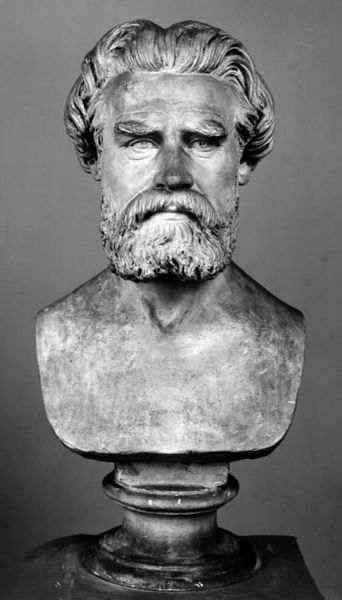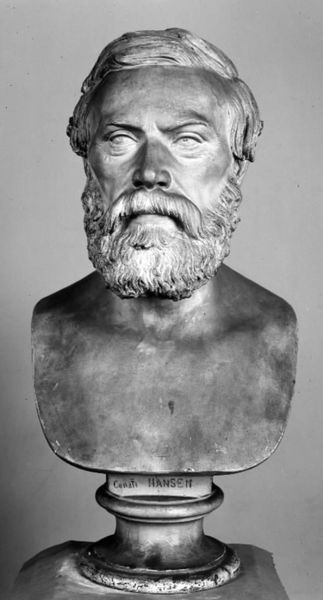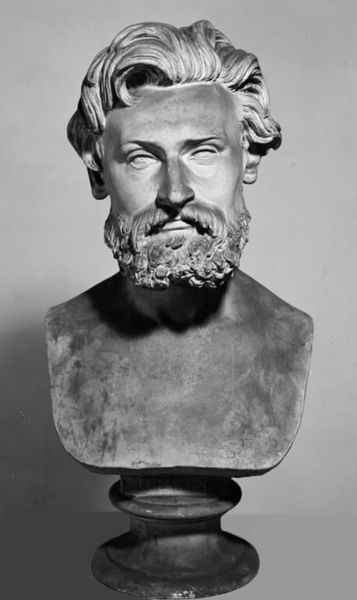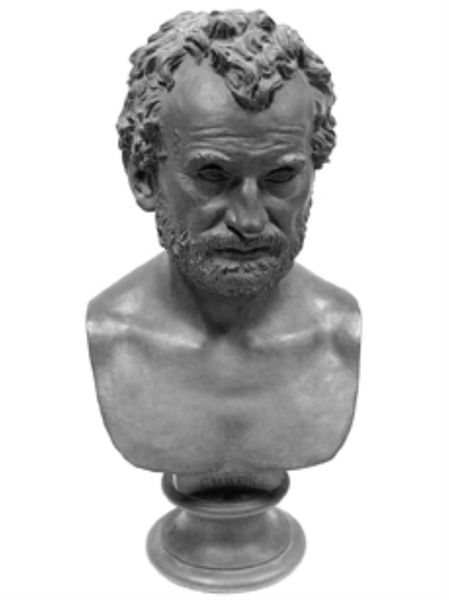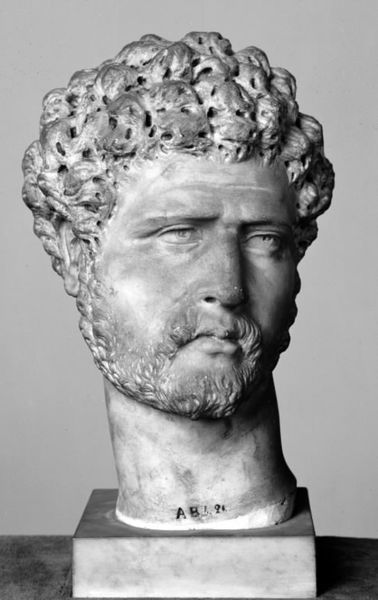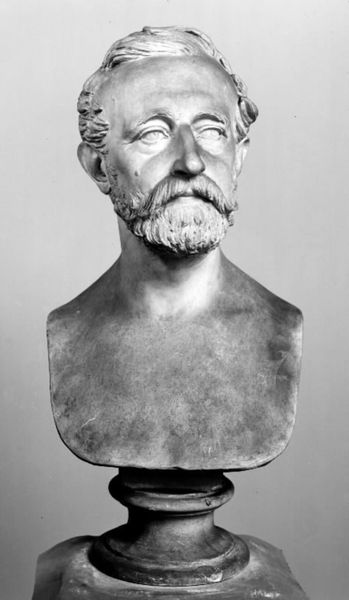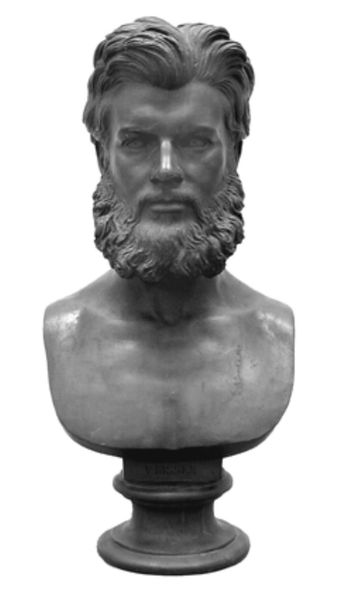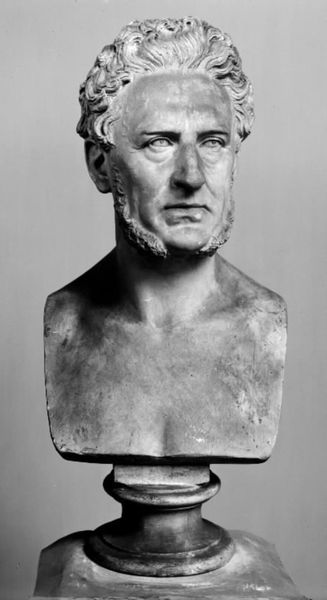
Dimensions: 62 cm (height) (Netto)
Curator: There's a compelling severity to this piece. Look at how the artist has sculpted the marble to evoke this powerful, slightly world-weary expression. Editor: The smoothness of the material betrays the rough texture of the hair and beard, all sculpted with a precision that only experience affords the hand. The very polish speaks of expenditure. Who *was* this guy? Curator: Indeed! The portrait we are viewing, made in 1861 by H.W. Bissen, is titled "Departementschef C.M. Weis", presently housed at the SMK in Copenhagen. C.M. Weis was, presumably, a department head. He embodies the very image of civic responsibility, don't you think? Editor: And, given it’s made from marble, which had to be quarried, transported, carved... the patronage here indicates a subject of considerable stature and, implicitly, means. I see the labour, the money. Curator: Marble in portraiture, particularly during the Neoclassical era, as is suggested by this bust's style, inherently invokes a sense of timelessness and the gravitas of classical antiquity. He’s literally been rendered in stone to carry a lasting cultural significance. Editor: The very process speaks to the deliberate construction of legacy! Consider the act of quarrying itself, of violently extracting this material from the earth... what was left behind when this bust was hewn from the raw stone? Curator: It makes you think about how societies memorialize those they deem important. Weis isn't just a likeness; he is an archetype now, representing perhaps the steadfast bureaucrat, a pillar of society. This portrait cements his role, creating a symbol for future generations. Editor: Symbols are so fragile. What happens to meaning when we stop recognizing the material for what it is, or when access becomes mundane? If marble lost its association with status, how does that alter the image of our Department Head? Curator: Precisely. Cultural memory and materiality intertwine to reinforce or challenge power. Well, thinking of permanence, let us carry on. Editor: A compelling glimpse at art, labor and history--I’ll leave thinking about which is more resilient.
Comments
No comments
Be the first to comment and join the conversation on the ultimate creative platform.
